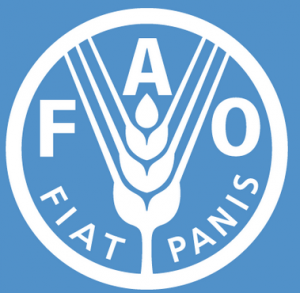West African countries not threatened by desert locusts – FAO
 The Food and Agriculture Organisation (FAO), Regional Office for Africa, says West African countries are not threatened by the current desert locust swarms, which hit some East African countries.
The Food and Agriculture Organisation (FAO), Regional Office for Africa, says West African countries are not threatened by the current desert locust swarms, which hit some East African countries.
Ms Jocelyn Brown Hall, the Deputy Regional Representative of FAO Africa, assured West African countries, especially Ghana, that there were no threats of the desert locust outbreak currently in the eastern part of the continent.
Speaking at a press briefing on the outbreak of the desert locust swarms, she said they were not harmful to human beings but their horrendous effects to food security in the affected countries were very bad.
Ethiopia, Kenya and Somalia are dealing with desert locust swarms of “unprecedented size and destructive potential” that could spill over into more countries in East Africa.
Ms Brown Hall said the FAO was in close contact with the ministries of Food and Agriculture of countries badly affected to see how best to address the issues.
“We are taking the locust invasion in those East African countries very serious,” she added.
She said the FAO had mobilised over $2 million of its own resources to support those countries.
The FAO was actively engaging with donors to secure additional funding to scale up actions, she said.
Ms Brown Hall said the FAO would help governments to rapidly strengthen national capacity to manage locust through training and to strengthen their reporting, surveillance and control capacities.
Professor Jean Baptiste Bahama, the Crop Production and Protection Officer at the FAO Regional Office for Africa, said the desert locust was the worst experience so far to affect those countries.
He said it could be controlled by bio-insecticides, which were less threats to humans.
A statement issued by the FAO on Monday warned that Ethiopia, Kenya and Somalia were dealing with desert locust swarms that could spill over into more countries in East Africa.
It said destroying hundreds of thousands of acres of crops, the outbreak was impacting the region’s food security.
FAO has called for a collective campaign to deal with the crisis, expressing concern over the risk of the swarms spill over into more countries in East Africa “if efforts to deal with the voracious pest are not scaled up across the region”.
The statement said Kenya has not faced a locust threat of this magnitude in 70 years and the outbreak of desert locusts, considered the most dangerous locust species, has also affected parts of Somalia and Ethiopia, the likes of which have not been seen on this scale in 25 years.
“South Sudan and Uganda are not currently affected, but are at risk,” it added.
In the statement, the FAO Director-General, Mr Qu Dongyu, said the Organisation was activating fast-track mechanisms to support governments, warning that the situation was now of “international dimensions.”
“Authorities in the region have already jump-started control activities, but in view of the scale and urgency of the threat, additional financial backing from the international donor community is needed so they can access the tools and resources required to get the job done,” Mr Qu said.
Swarms potentially containing hundreds of millions of individual desert locusts can move 150 kilometres a day – devastating rural livelihoods.
According to the FAO, “given the scale of the current swarms, aerial control was the only effective means to reduce the locust numbers”.
FAO is assisting with forecasts, early warning and alerts on the timing, scale and location of invasions and breeding.
Mr Qu also warned the response must include efforts to restore people’s livelihoods.
“Communities in Eastern Africa have already been impacted by extended droughts, which have eroded their capacities to grow food and make a living. We need to help them get back on their feet, once the locusts are gone,” Mr Qu was quoted as saying.
The UN is seeking $70 million to urgently support both pest control and livelihood protection operations in the three most affected countries.
Source: GNA
